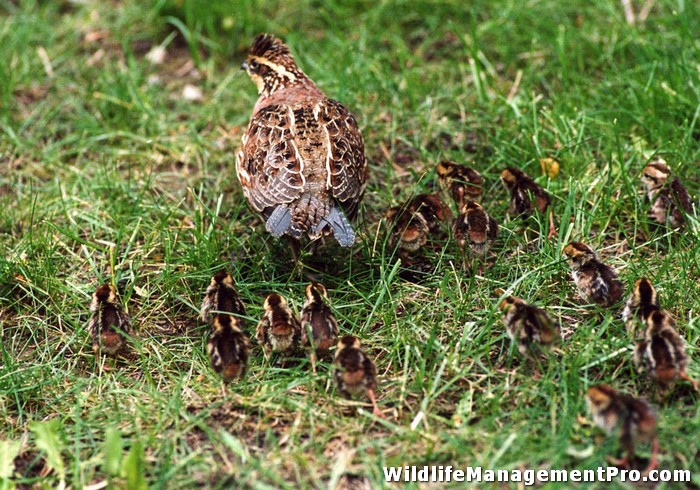Bobwhite quail are important game bird both economically and socially. However, quail populations have declined over time because of changing habitat. As a result, persons interested in bobwhite have turned to quail habitat management practices to restore and enhance suitable areas. Exotic grasses are not the best grasses for quail. In fact, these pose a serious problem for quail and quail habitat. The three most common exotic grasses are Bermuda, bahia and fescue.
These non-native grasses were introduced for soil erosion control on many properties, but also for hay production and forage crops for livestock. While these exotic grasses work well for these purposes, they provide poor conditions for bobwhite quail and also are very invasive, often outcompeting desirable, native grasses. In addition, these introduced grasses are also planted to mononcultures, further decreasing any available quail habitat.
Exotic grasses create many problems for bobwhite quail. First, bobwhite quail need a mixture of annual and perennial weeds and grasses along with shrub and briar thickets. Good native weeds and grasses for bobwhite quail habitat include plants such as beggarweeds, partridge peas, ragweeds, lespedezas, milk peas, wild beans, broomsedge, Indian grass, and other native grasses. These plants provide nesting and brood-rearing cover along with food.
In addition, the dead leaves from the previous years growth of clumped native grasses provide important quail nesting material. With the introduction of exotic pasture grasses like Bermuda, bahia and fescue, native weeds and grasses are often out-competed and largely absent from pastures, hay fields and idle areas around farmlands. This results in horrible habitat for bobwhite quail, and poor quail hunting for you.
To make matters worse, non-native grasses are aggressive and move into areas where they are not desired. Bermuda grass is often seeded into filter strips or farm roads, but it continues to encroached into crop fields. These grasses are hard to control and pose a continuous challenge in areas around farmlands that are managed for quail, such as field borders, hedge rows and field corners.
So it can be said that exotic grasses are detrimental to quail, but you are probably asking yourself why these non-native grasses are such a bad deal for quail. Probably the most negative impact of pasture grasses is through the reduction of brood-rearing habitat. Brood-rearing cover, such as areas that were burned or disked the fall/winter before the hatch, consists of plants like ragweed that provide a canopy of overhead cover with open ground underneath, which facilitates quail mobility. Most non-native grasses thatch, creating impassible barriers for birds.
Native brood-rearing areas provide chicks with an abundance of insects, which is important for rapid growth and development, protection from predators and shade for cooling. Hens typically will select a nesting site near quality brood habitat so chicks can be led to the area to forage for insects quickly.
When matted grasses are present, chicks must attempt to walk or climb over these sites. This results in a reduction in insect foraging time, increased energy expenditures, increased exposure to predators and perhaps increased air temperatures. These factors work together to lead to reduced chick survival. Exotic grasses are not the best grasses for quail. In short, non-native grasses make for bad quail habitat. The control of exotic grasses for bobwhite quail is recommended.
